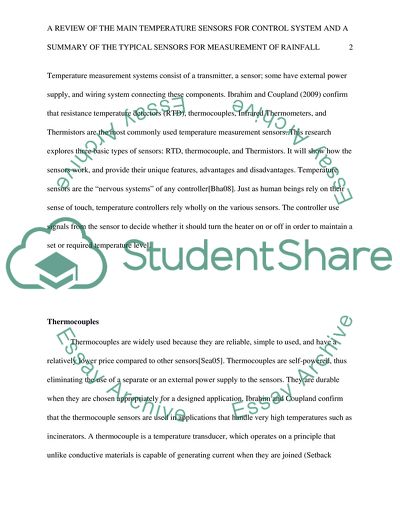Cite this document
(“A Review of the Main Temperature Sensors for Control System and Assignment”, n.d.)
Retrieved from https://studentshare.org/engineering-and-construction/1636628-a-review-of-the-main-temperature-sensors-for-control-systems-a-summary-of-the-typical-sensors-for-measurement-of-rainfall
Retrieved from https://studentshare.org/engineering-and-construction/1636628-a-review-of-the-main-temperature-sensors-for-control-systems-a-summary-of-the-typical-sensors-for-measurement-of-rainfall
(A Review of the Main Temperature Sensors for Control System and Assignment)
https://studentshare.org/engineering-and-construction/1636628-a-review-of-the-main-temperature-sensors-for-control-systems-a-summary-of-the-typical-sensors-for-measurement-of-rainfall.
https://studentshare.org/engineering-and-construction/1636628-a-review-of-the-main-temperature-sensors-for-control-systems-a-summary-of-the-typical-sensors-for-measurement-of-rainfall.
“A Review of the Main Temperature Sensors for Control System and Assignment”, n.d. https://studentshare.org/engineering-and-construction/1636628-a-review-of-the-main-temperature-sensors-for-control-systems-a-summary-of-the-typical-sensors-for-measurement-of-rainfall.


